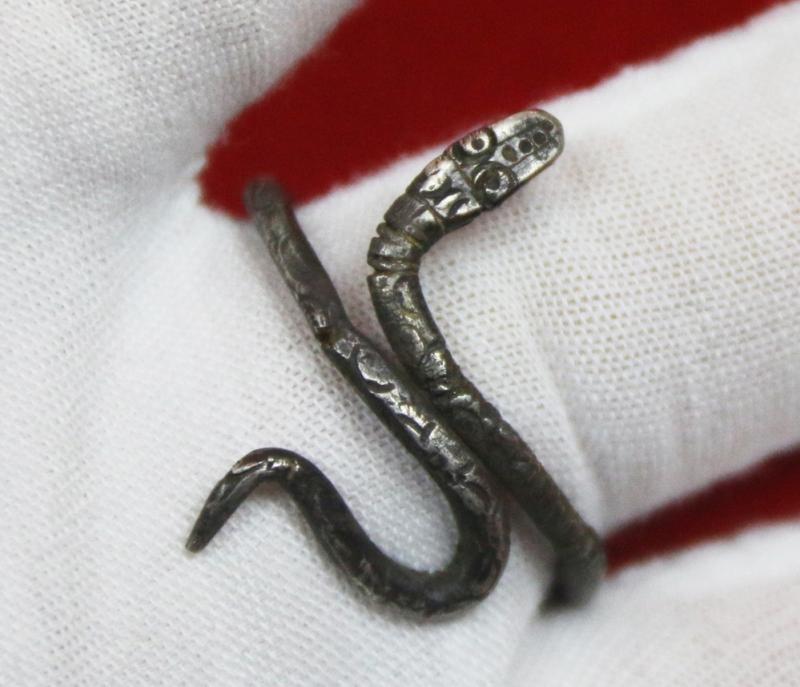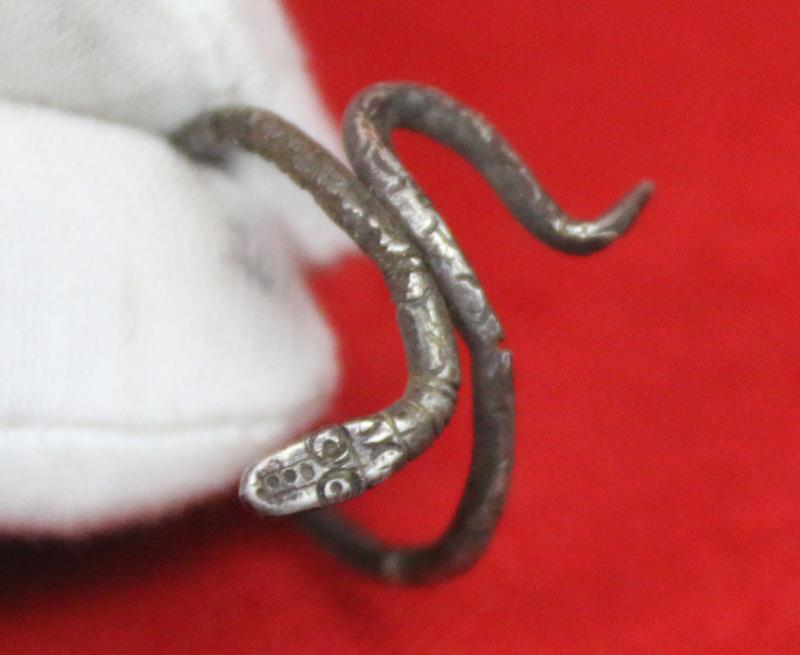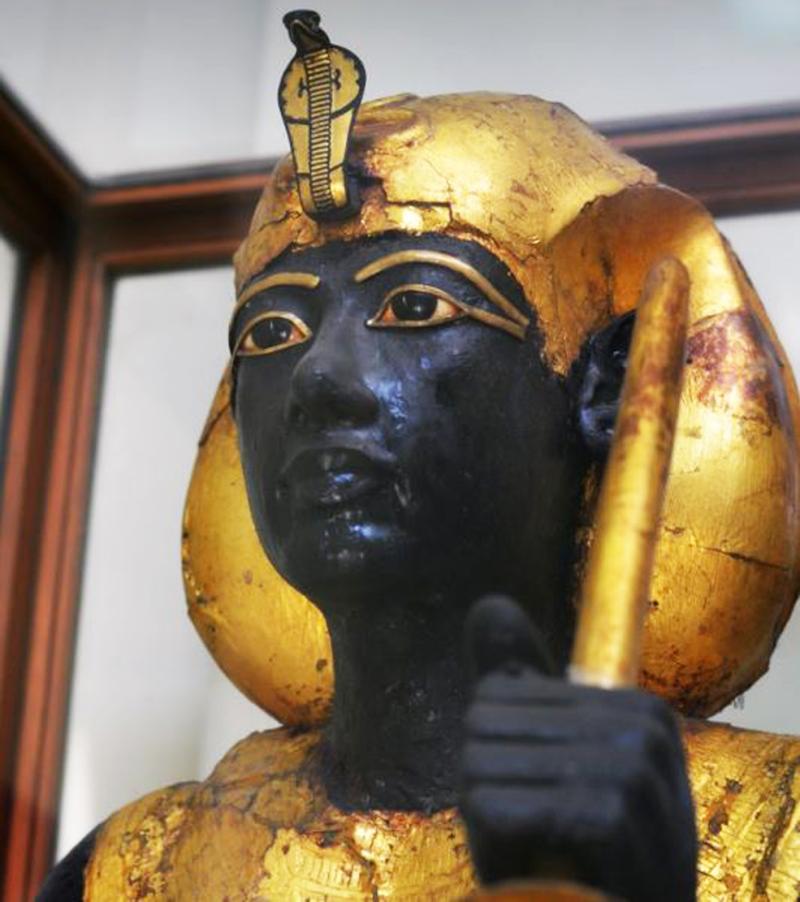A 2000 to 2100 Year Old Silver Goddess Wadjet Ring, Late Egyptian Ptolomeic Period & the Roman Pharoahs Era
Romano-Egyptian coiled and engraved silver serpent, decorated with and engraved head and scales. An ureaus ring, from the time of Cleopatra, Julius Caeser and Mark Anthony.
The Uraeus is the name given to the symbol of a rearing cobra, used in ancient Egypt to denote royalty and divine authority. it has a special significance in Roman culture royalty and art, and especially with Cleopatra the last Egyptian Pharoah to wear the Nemes serpent crown, and who famously, allegedly comitted suicide utilizing the bite of the asp serpent.
The pharaohs, dynastic kings and queens of Egypt, wore the Uraeus symbol as a head ornament as part of their crown. As far back as the Old Kingdom (3rd millennium BCE) wearing the Uraeus serpent communicated the pharaoh's legitimacy in ruling the lands of Lower Egypt.
In hieroglyphics, the Uraeus was often used to refer to a priestess or a goddess such as Isis. One myth about the origin of the Uraeus symbol claims that Isis created the first Uraeus, forming it from dust and spit. Isis used the snake in order to win the throne of Egypt for Osiris, her husband.
Egyptian Snake Goddess
The Uraeus is the symbol of the Egyptian snake goddess Wadjet. One of the oldest deities in the Egyptian pantheon, Wadjet was worshiped as the patroness of the Nile Delta and the protector of Lower Egypt. The center of Wadjet's cult was Per-Wadjet. The snake symbol worn by the pharaohs was seen to symbolize Wadjet's protection of the pharaoh and her approval of his claim of sovereignty. Some goddesses were also depicted wearing the Uraeus upon their heads, suggesting that the Egyptians believed these goddesses embodied aspects of Wadjet or fell under her protection.
When the Upper and Lower Kingdoms of Egypt unified, an image of Nekhbet, the vulture goddess and patron of Upper Egypt joined the image of Wadjet as the Uraeus on the pharaoh's crown. The two goddesses were known as the Nebty, the two ladies, and were seen as joint protectors of the newly-unified kingdom. When the sun god Ra rose to prominence during the Middle Kingdom and the pharaohs began to be seen as manifestations of Ra, the Uraeus was believed to protect them by spitting fire from the sun onto their enemies.
The Roman pharaohs, rarely referred to as ancient Egypt's Thirty-fourth Dynasty, were the Roman emperors in their capacity as rulers of Egypt, especially in Egyptology. After Egypt was incorporated into the Roman Empire in 30 BC, the people and especially the priesthood of the country continued to recognise the Roman emperors as pharaohs, according them traditional pharaonic titularies and depicting them with traditional pharaonic garb, engaging in traditional pharaonic activities, in artwork and at temples throughout Egypt.
Cleopatra VII had affairs with Roman dictator Julius Caesar and Roman general Mark Antony, but it was not until after her 30 BC suicide (after Mark Antony's defeat against Octavian, who became Emperor Augustus) that Egypt became a province of the Roman Republic. Subsequent Roman emperors were accorded the title of pharaoh, although exclusively while in Egypt. As such, not all Roman emperors were recognized as pharaohs. Although Octavian made a point of not taking the Pharaonic crown when he conquered Egypt, which would have been difficult to justify to the wider empire considering the vast amount of propaganda which he had spread about the "exotic" behavior of Cleopatra and Antony, the native population of Egypt regarded him as the pharaoh succeeding Cleopatra and Caesarion. Depictions of Octavian, now called Augustus, in traditional pharaonic garbs (wearing different crowns and the traditional kilt) and sacrificing goods to various Egyptian gods were made as early as around 15 BC and they are present in the Temple of Dendur, built by Gaius Petronius, the Roman governor of Egypt. Even earlier than that, Augustus had been accorded royal titles in the Egyptian version of a 29 BC stele made by Cornelius Gallus, despite royal titles not being present in the Latin or Greek-language versions of the same text.
Last pictures in the gallery of Roman bust of a Roman emperor wearing the Egyptian Nemes serpent crown, and another Egyptian tomb figure wearing the Nemes crown in carved wood and gold.
A large size even suitable as a thumb ring.
As with all our items it comes complete with our certificate of authenticity
Code: 24632
465.00 GBP









